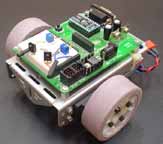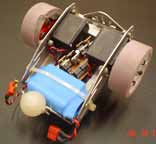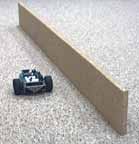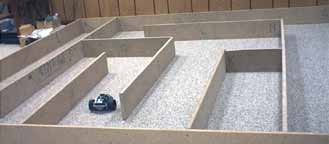Wall Follower
Sensors Selecting the frequencies for the distance detection is the most critical phase of the project. The frequencies must be determined for each IR LED/Detector combination. If either the IR LED or the detector is replaced, then a new set of frequencies must be determined. A frequency sweep was done for each inch from zero inches until there was no contact at any of the frequencies. The sweep was done from 32,500 Hz to 38,750 Hz with 25 Hz steps. At each frequency, an attempt to get contact was performed ten times and the number of hits was recorded. A little math indicates that we are looking at 50,000 to 70,000 individual tests for the sensors. A little intimidating, isn't it? First, a program was written to make ten attempts to detect an object and the number of hits was printed along with the frequency. Then the program was modified to run from 32,500 Hz to 38,750 Hz with 25 Hz steps. That gives us this very long printout. Using StampDAQ the printout can be captured and pasted in an Excel spreadsheet. The data was manipulated by Excel to find the best frequency for each distance. Program Logic A program was written to follow the left wall. If the wall was a few inches away, then the robot would go straight. If the wall was a little closer, then the robot would turn a little to the right. If the wall was a little farther away, then the robot would turn a little to the left. The closer or farther away from the wall would produce sharper turns. There are five increments of distance from the wall that determine the rate of turn. The same logic applies to the front sensor. If the front sensor doesn't see anything, then the left sensor controls the direction of travel. If the front sensor sees something, then the robot turns right. The closer that the robot gets to the front wall, the harder it turns. Using this logic is OK, but one problem was encountered. While turning around the end of a left hand wall, occasionally the front sensor would see the far wall and command a right hand turn. This is not acceptable. So, one more step was added. If the left sensor did not see anything, then the front sensor was ignored and a hard left turn was commanded. Contest Before each contest, the maze following robot could run the home course perfectly. Lighting and traction differences at the contests each year required hours of fine tuning the day before the event at the event site on the actual maze. Some times the previous days setup would not work for the contest. There is a lot of fine tuning to be done to produce a successful maze following robot. |





